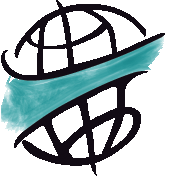 |
Tropentag, October 6 - 8, 2009 in Hamburg
|
Financing, Handling, Hardening and Marketing of Tissue Culture-Derived Planting Material through Nurseries: The Case of Banana in Kenya, Uganda and Burundi
Vinzenz B.M. Bauer1, Stefan Burkart1, Steffen Abele2, Esther Kahangi3, Thomas Dubois2, Danny Coyne2, Volker Hoffmann1
1University of Hohenheim, Institute for Social Sciences in Agriculture, Germany
2International Institute of Tropical Agriculture (IITA), Eastern and Southern Africa Regional Centre, Uganda
3Jomo Kenyatta University of Agriculture and Technology, Kenya
Abstract
The distribution of contaminated planting material (suckers) remains a major cause of spread of pests and diseases in banana. A traditional subsistence staple in East Africa, banana is becoming increasingly a commercialized commodity in the region. Essential for effective commercialization of this crop, however, is the supply and use of uniform and healthy planting material. Tissue culture (TC) technology can help provide this. However, TC plantlets are delicate and require substantially greater care and handling than conventional sucker planting material. To distribute TC seedlings to farmers and improve their robustness for successful use on farms, numerous hardening nurseries have been established by TC producers in Kenya, Uganda and Burundi. These nurseries are pivotal in the dissemination of plantlets. In 2008, financing, handling, hardening and marketing of TC-derived planting material through nurseries was assessed using semi-quantitative interviews of nursery operators. The nurseries in Kenya and Uganda are mostly farmer-led and obtain their material from the producer. In Burundi, the nurseries are owned and centrally managed by the producer, while daily activities are handled by technicians. In each country, water supply was identified as a key limiting factor, as the young plantlets desiccate easily. In farmer-led nurseries, plantlet transport and phytosanitary measures, such as soil sterilization and plant protection, are often limited, which can lead to significant plant losses. Governmental and non-governmental institutions purchase large fractions of the TC planting material. Public extension services for TC nurseries were evaluated as poor, leaving the TC producers as the single source of information for nursery operators. Additionally, plantlets tend to be viewed as relatively expensive, while supply is currently sub-optimal, compared to traditional planting material, resulting in a relatively limited and exclusive market. TC planting material in the region is therefore yet to be become sufficiently available for most banana farmers.
Keywords: Agricultural management, East Africa, horticulture, seed systems
Contact Address: Vinzenz B.M. Bauer, University of Hohenheim, Department of Agricultural Communication and Extension, Schloss-Museumsfluegel, 70593 Stuttgart, Germany, e-mail: vbmbauer uni-hohenheim.de
uni-hohenheim.de